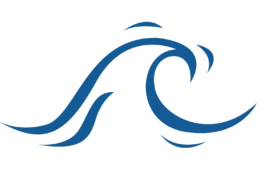CalSavers Alternatives
Retirement contributions are made and at some point if they are abandoned, what happens to them? You don’t want the government managing your money! 401k providers have stepped in and said that they’re going to offer low cost, basic options that are beneficial to employers and are much more customizable than CalSavers for users.
There are a lot of benefits to going outside of CalSavers, like investing smarter, better returns, matching returns (tax write offs for employers). Let’s discuss the alternative options to using CalSavers.
CalSavers
CalSavers is a retirement savings program for Californians who do not have access to an employer-sponsored retirement plan. The program is administered by the California Secure Choice Retirement Savings Investment Board, and offers a low-cost, portable retirement savings option for workers in the state.
CalSavers is open to any worker in California who does not have access to an employer-sponsored retirement plan. There is no minimum balance required to open an account, and workers can contribute as little or as much as they want. Contributions to Calsavers are made through payroll deduction, and are invested in a professionally managed, diversified portfolio of low-cost index funds.
Workers who participate in CalSavers will be able to save for retirement and take their savings with them if they change jobs.
Why is CalSavers an Unpopular Choice?
There are a few potential reasons why employers might not be thrilled about CalSavers. First, the program requires employers to automatically deduct 5% of an employee’s wages (unless the employee opts out). This could lead to some employees feeling like they’re being forced to save, which may not be popular.
Additionally, employers are responsible for contributing to their employees’ accounts if the employees don’t reach the 5% threshold on their own. This could be viewed as an extra cost for businesses. Finally, it’s possible that some employers feel like the program is too much of a government intrusion into the private sector.
Whatever the reason, it’s clear that not everyone is on board with CalSavers.
401k vs Roth vs IRA
The 401k, Roth IRA, and Traditional IRA are three of the most popular retirement savings plans available to workers in the United States. All three have their own unique benefits and drawbacks, so it’s important to understand the differences between them before deciding which one is right for you.
401K
401k plans are offered by many employers as a way to help their workers save for retirement. The biggest benefit of 401k plans is that they offer tax breaks on the money that you contribute. This can help you save a significant amount of money over time. However, 401k plans also have some drawbacks. One is that you are limited in how much you can contribute each year. Another is that 401k plans often come with high fees.
Roth IRAs
Roth IRAs are Individual Retirement Accounts that are funded with after-tax dollars. This means that you won’t get a tax break on the money you contribute, but you will be able to withdraw the money tax-free in retirement. Roth IRAs also have no contribution limits, so you can save as much as you want. However, Roth IRAs do have income limits, so not everyone can contribute.
IRAs
Traditional IRAs are also Individual Retirement Accounts, but they are funded with pre-tax dollars. This means that you get a tax break on the money you contribute, but you will have to pay taxes on the money when you withdraw it in retirement. Traditional IRAs also have contribution limits, but they are higher than 401k plans. Traditional IRAs also have income limits, so not everyone can contribute.
The best retirement savings plan for you will depend on your individual circumstances. If you want to get a tax break on your contributions, a 401k or Traditional IRA may be the best choice. If you’re not concerned about taxes and you want the ability to save as much as you want, a Roth IRA may be the best choice.
SafeHarbor 401k
The SafeHarbor 401k is a retirement savings plan that allows employees to contribute a portion of their salary into the plan on a tax-deferred basis. This action not only reduces your current taxable income, but it also allows your money to grow tax-free until you withdraw it at retirement. Employers may also choose to make contributions on behalf of their employees, which can further enhance the retirement savings opportunities for employees.
There are a few key features of the SafeHarbor 401k that make it an attractive option for employers and employees alike:
- Employees can contribute up to $18,500 per year ($24,500 if age 50 or older) on a tax-deferred basis.
- Employers can make matching or discretionary contributions on behalf of their employees.
- There is no required minimum distribution age, so employees can keep their money invested for as long as they want.
- Employees can access their account balance at any time, although there may be taxes and penalties assessed for early withdrawals.
The SafeHarbor 401k is just one of many retirement savings options available to employees and employers. Other popular options include the traditional 401k, 403b, and 457 plans. Each type of plan has its own unique features and benefits, so it’s important to compare all of your options before choosing the best plan for your needs.
Payroll Deduction IRA
A Payroll Deduction IRA is an individual retirement account (IRA) that is established and funded through payroll deductions from an employee’s paycheck. The funds are then invested in a variety of assets, such as stocks, bonds, and mutual funds.
The main advantage of a Payroll Deduction IRA is that it allows employees to save for retirement on a regular and consistent basis. This can be especially helpful for employees who do not have the discipline to save on their own. Additionally, some employers may offer matching contributions, which can further help to grow the account balance.
The main disadvantage of a Payroll Deduction IRA is that it may not provide enough money to cover all of an employee’s retirement expenses. Additionally, the account balance may be subject to market fluctuations, which can lead to losses.
How To Avoid CalSavers
If you’re an employer, you have a few options for avoiding CalSavers. You can:
- Opt out of CalSavers altogether
- Provide your own retirement savings plan that meets certain criteria
- Do nothing and let your employees automatically enroll in CalSavers (this started July 1, 2020)
If you opt out of CalSavers, you can’t re-enroll your employees later. Employees who are already enrolled in CalSavers when you opt out will be able to continue contributing to their accounts, but no new employees will be able to enroll.
To opt out, you must submit a notice to the CalSavers program administrator within 120 days of your first payroll period. The notice must indicate that you’re opting out and must be signed by an authorized representative of your company.
If you choose to provide your own retirement savings plan, it must:
- Be a qualified retirement plan under state or federal law
- Cover all employees who work at least 20 hours per week and have been employed for at least 3 months
- Allow employees to contribute at least 2% of their pay (5% for highly compensated employees)
- Make employer contributions that are at least as generous as the CalSavers default contributions
If your company’s retirement plan meets these criteria, you don’t have to do anything else. Your employees will be automatically enrolled in your company’s plan and won’t be able to participate in CalSavers.
If you don’t opt out and you don’t provide a retirement savings plan that meets the criteria above, your employees will be automatically enrolled in CalSavers. Employees can choose to opt out of CalSavers or change their contribution amount at any time.
What Happens if Employees Don’t Want Calsavers?
In short, nothing. If your employees don’t want to participate in Calsavers, they can opt out of the program. However, if they do opt out, they will not be able to contribute to or receive benefits from the program. Additionally, if an employee opts out of Calsavers and then changes their mind, they will not be able to re-enroll in the program until the next open enrollment period.
Let’s Address Some Common Questions
Is CalSavers mandatory in California?
Yes, CalSavers is mandatory for most employers in California. Employers with 500 or more employees in the state must offer the program to their employees by July 1, 2020. Employers with less than 500 employees must offer the program by July 1, 2021. Employees are automatically enrolled in the program unless they opt out. Employers must make contributions to the program on behalf of their employees, unless the employees elect to make their own contributions.
What Are 3 Types of Employer-Sponsored Retirement Plans?
There are three common types of employer-sponsored retirement plans: 401(k)s, 403(b)s, and 457s. Each type of plan has its own set of rules and regulations.
401(k) plans are the most common type of employer-sponsored retirement plan. They are available to employees of for-profit companies. Employees can contribute pretax dollars to their 401(k) accounts. Employers may also make matching or nonelective contributions to these accounts.
403(b) plans are available to employees of nonprofit organizations and some government agencies. Employees can contribute pretax dollars to their 403(b) accounts. Employers may also make matching or nonelective contributions to these accounts.
457 plans are available to employees of state and local governments, as well as some nonprofit organizations. Employees can contribute pretax dollars to their 457 accounts. Employers may also make matching or nonelective contributions to these accounts.
Are Owners Exempt from CalSavers?
No, owners are not exempt from CalSavers. All employers with five or more employees must offer a retirement savings plan to their employees, including owner-employees. However, there is an exception for certain sole proprietors and business partners who may be exempt from the requirements under federal law.
Is CalSavers a 401k or Roth IRA?
CalSavers is a 401k, but it also allows for Roth IRA contributions.
Can Employers or Business Owners Get Tax Write-Offs for Retirement Contribution Matching?
Yes, employers or business owners can get tax write-offs for retirement contribution matching. This can be a great way to save for retirement while also getting a tax break.
It’s Good to Know Your Options
CalSavers has quickly become one of the most popular retirement savings options for Californians. However, it is not the only option available. There are a number of other retirement savings programs available, each with its own set of benefits and drawbacks. Ultimately, it is up to each individual to decide which program is best for them.
If you’re a business owner and want to learn more about CalSaver’s, check out our simple guide to CalSavers.
This information was developed as a general guide to educate plan sponsors, but is not intended as authoritative guidance or tax or legal advice. Each plan has unique requirements, and you should consult your attorney or tax advisor for guidance on your specific situation. In no way does advisor assure that, by using the information provided, plan sponsor will be in compliance with ERISA regulations.











